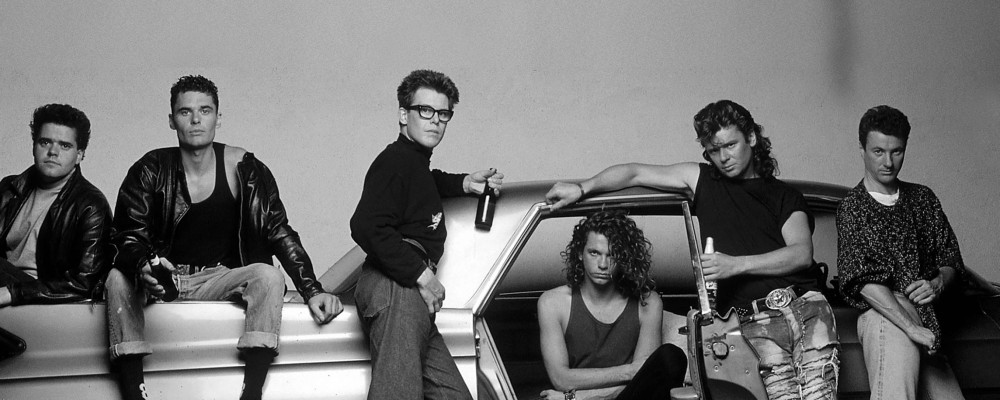This is the closing chapter of a 4 part series on mental health
On December 15th, 2019, three months to the day today, I was hospitalized for severe depression and suicidal thoughts. The previous 3 chapters tell my story with the mental health care system in its entirety, but I wanted to close this chapter of my life with one final chapter (pun intended). The only “good” that came out of this experience was that it ended my dependency on Kratom which had become a serious problem. I stopped cold turkey when I was admitted, and strangely, and thankfully, I did not experience any severe withdrawal symptoms. Below are selfies I took of myself on the day I arrived and on the day I left the hospital. As you can see, I look beaten down and exhausted in the "just got home" photo which speaks volumes I believe as to how dreadful the experience was.

Although I don’t suffer from a mental health illness per se, I have indirectly struggled with mental health due to ongoing chronic physical health problems that have taken a tremendous toll on me psychologically (my attending psychiatrist having confirmed this). After years of chronic physical suffering, and losing some of my independence, my brain feels like it's been cracked like a walnut in a nutcracker. I don’t have anything to add to my story, so I thought I would share this letter (below) that I serendipitously received this morning from the “Centre for Addiction and Mental Health” (CAMH). It is Canada's largest mental health teaching hospital and one of the world's leading research centres in its field. CAMH is affiliated with the University of Toronto and is a Pan American Health Organization/World Health Organization Collaborating Centre.

Although the song Suicide Blonde does not really speak to suicide but rather tells the story of Michael Hutchence’s (Lead singer of INXS) girlfriend’s experience with dying her hair blonde for a part she was playing in a movie, I still wanted to use it to bookend this chapter. I think that with Michael having committed suicide, which is quite sad and ironic at the same time, the song makes for a fitting tribute to pay to some of my friends, acquaintances, and colleagues who have succumbed to suicide.
Letter from the CAMH
Patrick,
It is tragic, but not surprising, that we are facing a mental health crisis in Canada. It is a crisis many years in the making, related directly to vast differences in the way mental health and physical health in Canada are talked about, understood, treated, and funded.
This injustice—this glaring inequality when it comes to mental and physical health—won’t change unless we act now.
That is why we launched our Mental Health is Health campaign—because it is time we tell a different story about mental illness in Canada. Please check out the stories and videos we have compiled as part of this campaign and learn more about the brave individuals who are speaking up to end the silence, shame, and neglect around mental illness.
Our mental health crisis all boils down to three critical differences that must change if we are going to face it head-on; a difference in our perception, in our knowledge, and in how mental illness is funded. And, unsurprisingly, these differences are all connected.
First, stigma and the perception that mental illness is not "treatable" holds people back from seeking the help they need.
Second, the disparity in our knowledge—due in part to decades of underfunding research into mental illness—means that we still have so much work to do to improve outcomes for people affected by it.
Finally, the difference in funding means that even when people bravely seek help—in spite of the stigma or the fear that there is no help for their suffering—the treatment they seek just might not be available.
That’s why CAMH’s campaign is so important, Patrick. We have the opportunity to use our voices and tell the stories of thousands of Canadians living with mental illness to make it clear that Mental Health is Health.
Simply put: the more we can break down stigma in our communities, the more we can invest in research, the more likely mental illness will be seen as "treatable"—and therefore, receive more funding.
Thank you for your support,
David Goldbloom, OC, MD, FRCPC
Senior Medical Advisor
CAMH
Suicide Blonde – INXS
Don't you know what you're doingYou've got a death wish
Suicide blonde
Suicide blonde
Suicide blonde
Suicide blonde
Suicide blonde was the color of her hair
Like a cheap distraction for a new affair
She knew it would finish before it began
Wow baby I think you lost the plan
You want to make her suicide blonde
Love devastation, suicide blonde
You want to make her suicide blonde
Love devastation, suicide blonde
She stripped to the beat but her clothes stay on
White light everywhere but you can't see a thing
Such a squeeze
A mad sad moment
Glory to you
Glory to you
Take me there
Take me there
Got some revelation
Put into your hands
Save you from your misery like rain across the land
Don't you see the color of deception
Turning your world around again
You want to make…
- Patrick Franc
a.k.a.: Your Friendly Neighbourhood Bionic Man

Monique
Thanks for sharing the importance of de-stigmatizing mental health. J&J is one of few companies still working in this therapeutic area. It was heart breaking to learn recently that children as young as 9 years old are being enrolled in depression/suicide clinical trials. Depression is real, regardless of the underlying cause. We can do better.